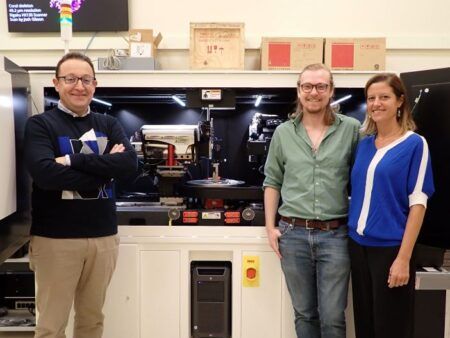Two ex-colleagues from the Flight Science and Technology group at the University of Liverpool lock horns over the testing issue of ‘clean-sheet design versus incremental upgrades’ – and the implications of this on testing.
Garnet Ridgway: If a single picture could illustrate the impact of the global economic situation on the defense industry, a strong contender would be one from BAE Woodford, UK, in 2011. Nine years late and £780m (US$1.2bn) over budget, the long-anticipated Nimrod MRA4 project was canceled, and nearly completed airframes were rolling off the assembly line and immediately being demolished.
This situation raises questions. What could have caused the project to go so badly wrong? Surely a simple upgrade of an existing platform is the low-risk option? And perhaps most importantly, what lessons can be learned from this? From a testing perspective, incremental upgrade projects can be very appealing, primarily because the previous version of the aircraft provides a solid baseline against which upgrades can be evaluated. The phrase “not worse than Mk1” can be extremely useful in expediting the release to service process. However, it can be easy to forget that, just because a system is an improvement on its predecessor, it is not necessarily fit for purpose. This is especially true when working with legacy equipment that has already passed through several upgrade iterations – as was the case with the Nimrod. The inquiry into the total loss of a Nimrod MRA2 in 2006 found that a design flaw in the fuel system, originating in 1969, had passed through two major upgrades without being addressed. The difficulty in tracing such issues can be exacerbated by the fact that the engineers involved in the original design are long-retired, or even that the original design organization no longer exists.
The installation of new equipment into legacy airframes can also create new problems. For example, a leaking cockpit window considered unimportant on the original aircraft may now be positioned directly above a new item of electrical equipment. The identification of such an issue in testing can lead to an awkward contractual position: who’s responsible for addressing it? The legacy design organization will be reluctant to fix an issue that has previously passed through acceptance testing, and those responsible for the upgrade will claim it falls outside the scope of their contract. A well-designed contractual framework can mitigate against such difficulties, but only if it is in place ab inito.
An overall conclusion that can be drawn is that there comes a time when even the longest-serving, most capable aircraft should be retired, rather than upgraded. With this in mind, consider the UK MoD’s recent decision to replace the Nimrod R1 with the Boeing RC-135 – a design that first flew in the late 1950s. Maybe this will be the exception that proves the rule; only time will tell.
Garnet Ridgway has a PhD from the University of Liverpool. He has designed cockpit instruments for Airbus and currently works for a leading UK-based aircraft test and evaluation organization
Sophie Robinson: The alternative to incrementally upgrading an aircraft is one which engineers can find exciting and challenging in equal measure; clean-sheet design. Clean-sheet design used to be the go-to method of developing new capabilities. In the post-World War II era of rapidly advancing technologies and changing capability requirements, clean-sheet design was the norm. Since then, monetary, regulatory and time constraints have seen clean-sheet design become an increasingly rare occurrence. Combine this with the reduced rate of step-change technological advancements, and clean-sheet design becomes a once-per-generation activity.
The RAH-66 Comanche helicopter is a relatively recent example of clean-sheet design. This provided engineers with an exciting opportunity to use all the modern technologies at their disposal – and they seized it. The design of the Comanche featured an all-composite fuselage, main rotor and empennage, stealthy features to reduce its radar cross section, and a sophisticated fly-by-wire control system. These technologies combined to produce a potentially very powerful platform, but also high expectations of its performance.
A disadvantage of this is that the resulting aircraft is so far in advance of its predecessors that existing testing methodologies are no longer sufficient to formally assess the aircraft. New testing methods have to be developed, which is both costly and time consuming. There can also be contractual issues associated with the development of these new testing methods – are they the responsibility of the design organization or the customer? Excessive design and performance targets (for example, being expected to have sufficient range to ferry itself across the Atlantic), and unrealistic over-arching requirements, as well as poor management, resulted in the Comanche project being cancelled in 2004 at a cost of US$7bn. This illustrates another problem with clean-sheet design; engineers see it as an opportunity to showcase the bleeding edge technology in their discipline, often to the detriment of the viability of the design as a whole. While US$7bn might be somewhat expensive for a single document, an enduring legacy of the Comanche program is the military handling qualities specification ADS-33E-PRF.
This specification is the go-to document for rotorcraft designers and evaluators worldwide, proving that the benefit of clean-sheet design extends beyond the delivery of new aircraft.
As a final ignominy, the money that the US Army would have spent on procurement of the Comanche was spent on incremental upgrades to their existing fleet of aircraft, proving that potential future capability is no substitute for proven performance.
Sophie Robinson is currently finishing her PhD as part of the Flight Science and Technology Research Group within the centre for Engineering Dynamics at Liverpool University. In the course of her research, Sophie regulary works with test pilots




